With Raheen Stud, Queensland/Australia
Spanning more than 4,000 acres in the fertile Gladfield Valley, Raheen is one of Queensland’s longest established and most successful thoroughbred nurseries. Founded in 1957 by the parents of the present day owner and chairman Basil Nolan, as a family run operation unquestionable personal care and attention is Raheen’s top priority.
At Raheen the Nolan family – Basil snr, his wife Diane, and daughter-in-law Natalie – offer a wide range of services, from stallions to sales preparation and from foaling to agistment.
Basil is President and Director the Thoroughbred Breeders Australia (TBA) which is the national peak body established for the benefit of the Australian thoroughbred breeding industry, which is the second largest in the world.
Laminitis in Broodmares
This mare (later described as horse 1, initially presented 17th January 2021) had chronic laminitis for 3 years and was extremely lame when I first met her. Her feet had degenerated on the invasive black soil, which compounded her foot problems as it works its way into the solar abscess wounds with every stride, making daily treatments difficult and dangerous.
Horses with such extensive damage and hoof pain understandably become very protective of their feet and are reluctant to bare weight on the already inflamed and infected tissue. Very quickly this becomes a workplace health and safety issue as the horse slams its foot down halfway through a bandage change and so must be cleaned all over again.
Supporting Treatment of Chronic Laminitis Cases with FormaHoof
Using FormaHoof to manage such chronic laminitis cases means that the length of time that must be spent under the horse, with the animal having to stand on one painful 1 foot daily for dressing changes, is reduced from 30 + hours a month to 1 just hour. This dramatically improves quality of life for both the horse and everyone in the horse care group!
Keeping the area supported, clean and medicated 24/7 increases healing time dramatically, reduces the chance of ‘inspection infection’ and many cases can transition back to barefoot in just 4-5 FormaHoof Applications.
In this time, the horse has the chance to grow some quality solar tissue, that has not been over-loaded and stressed and has not been compromised by bacterial breakdown as a result of exposure to the pathogens in the soil.
This combines with the improved concavity provided by the FormaHoof Application to decentralize the load from the tip of P3 to the whole hoof structure. By creating a functional, concave arch under the tip of P3, the pinch point between the end of the bone and the ground is removed.
The protection provided by the FormaHoof Application and resulting improvement in hoof balance and alignment means the horse can then load the area again in walk, with an improved, sound stride.
Movement is a large part of the healing process and an increase in comfort levels and reduction in pain means the horse is inclined to walk more, furthering the healing process.
This can be clearly seen here in the video below. When the mare is first presented, she is 4/5 lame. Once the FormaHoof Application is complete, she is immediately more comfortable at 2/5 lame, thanks to the improved concavity of the sole and support in the affected area.
Basil explains,
“Over the years we’ve had various horses with hoof problems on which we’ve tried many different remedial shoeing techniques. Several horses needed hospital plates and all of those cases were getting worse and worse. When I heard about it, I said we’d give FormaHoof a go! The first mare had been lame with laminitis for several years, but as soon as she was in the FormaHoof Application, you’d hardly know that she had been sore. It’s unbelievable how good she is and she’s now gone back in foal, which is a big indication of how comfortable they are. I can’t recommend FormaHoof highly enough.”
FormaHoof represents a better way forward, allowing the management and care of such horses in a safer and more humane way.
Follow up with the mares, to see how they are progressing during the laminitis rehab (4th March 2021):
Horse 1
This mare showed a significant improvement in her feet following her first FormaHoof application. The deep solar abscess has healed up and stopped discharging puss.
The foot was very clean, with no dirt or mud wedged into the sensitive areas. She was walking much better and overall her quality of life had improved dramatically.
The hoof has stopped distorting at the toe and is now growing down much straighter, creating a stronger hoof capsule.
On her next application we would expect to see improved sole depth and continued healing.

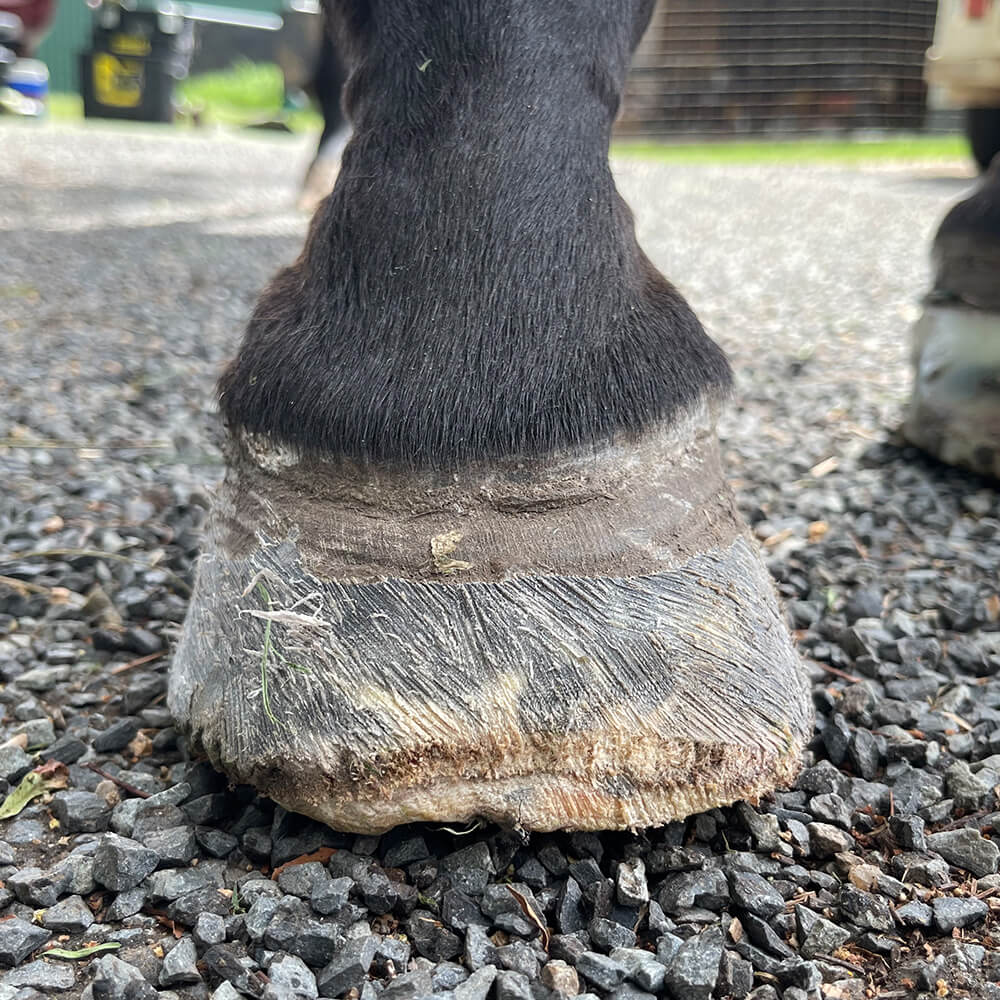
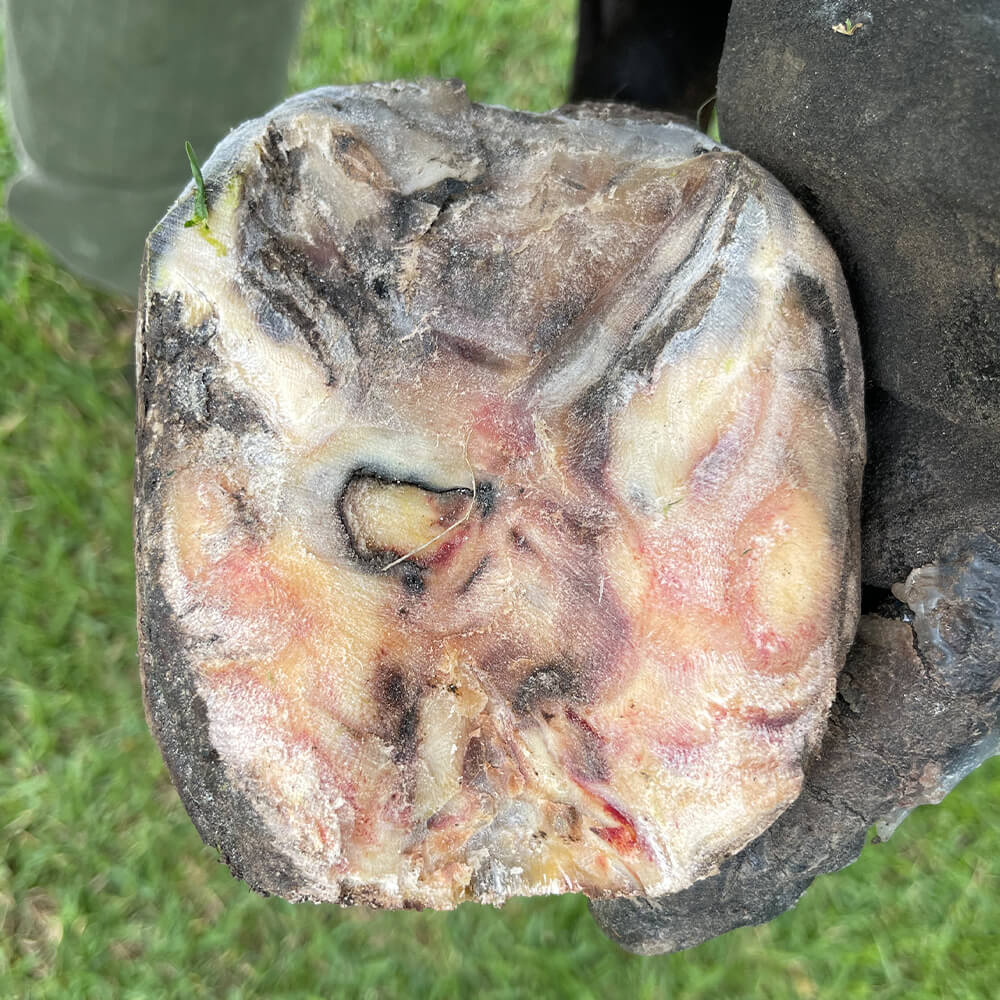


Horse 2
This is the original mare that I worked on at Raheen that had laminitis and deep sole abscesses. After her first application, she went in foal immediately, as referenced by Basil in the video.
She has fully rehabilitated, with all the solar abscesses cleaning up and significant, quality sole depth having grown, without distortion of the hoof wall. She has remained sound and in foal in the dry black soil paddock conditions at Raheen and has had a complete rehab to barefoot in three FormaHoof applications.

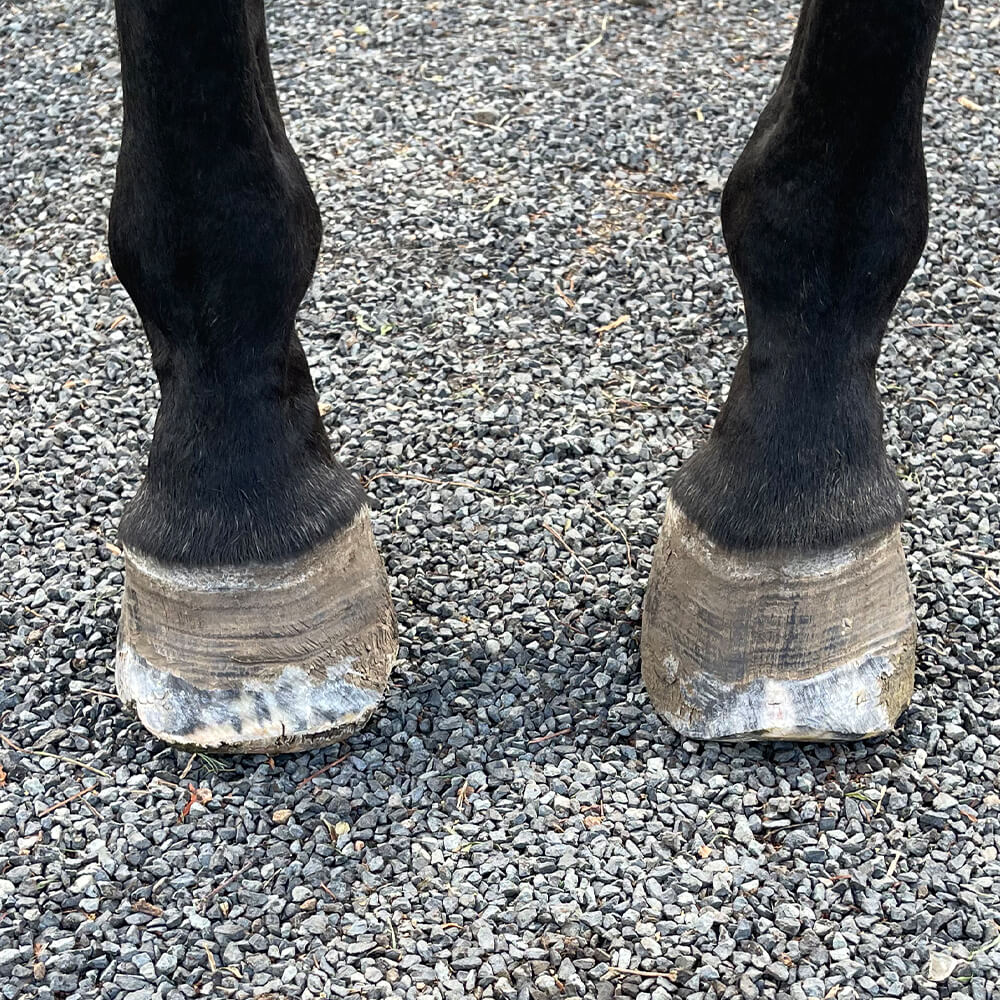
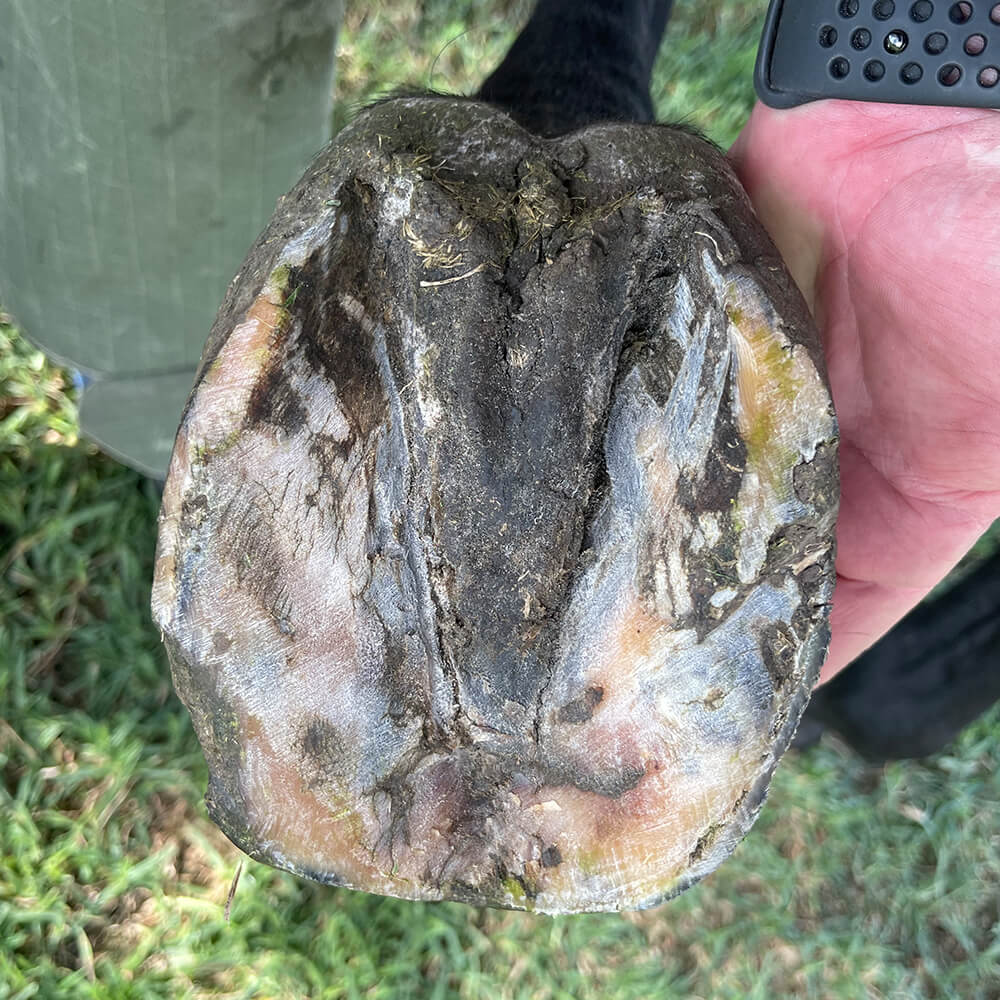
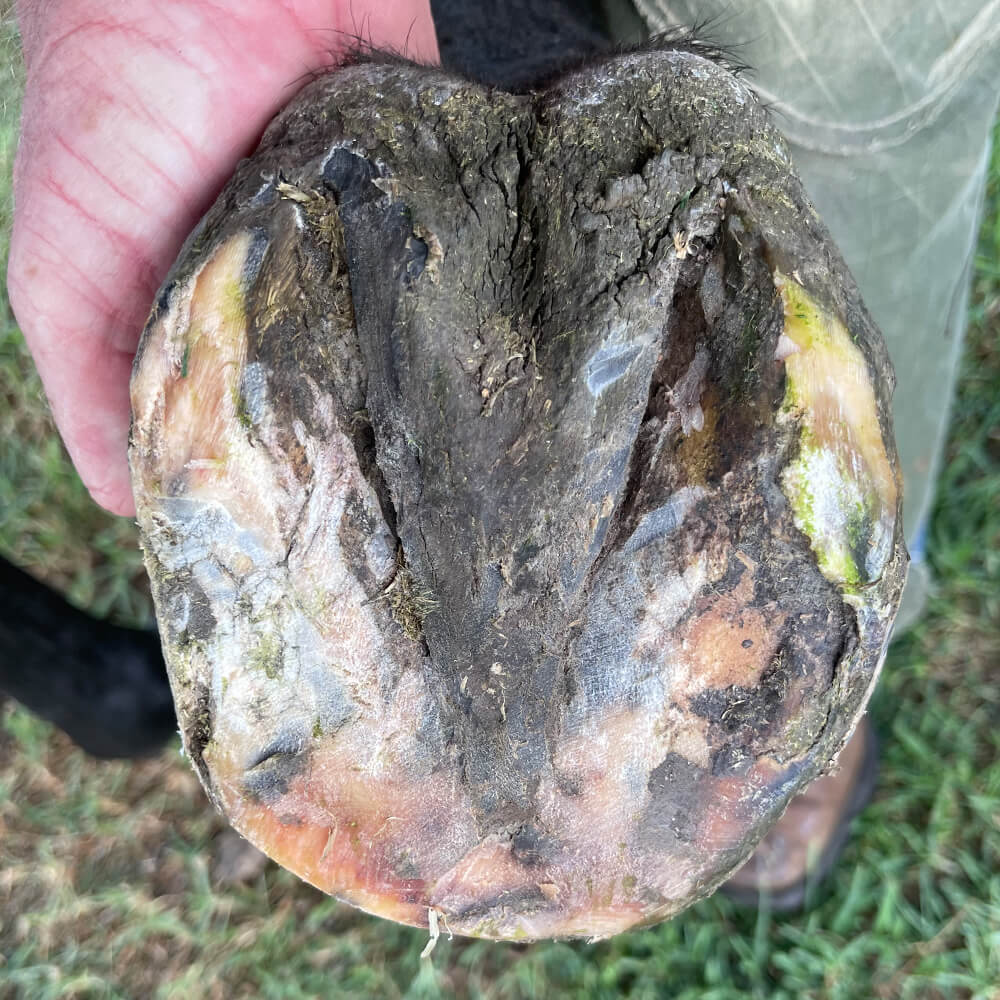

Horse 3
This case has been one of the most chronic laminitis cases I have worked on. After her first application, we saw a lot of the sub solar abscesses starting to heal up, but still have some discharge from the foot.



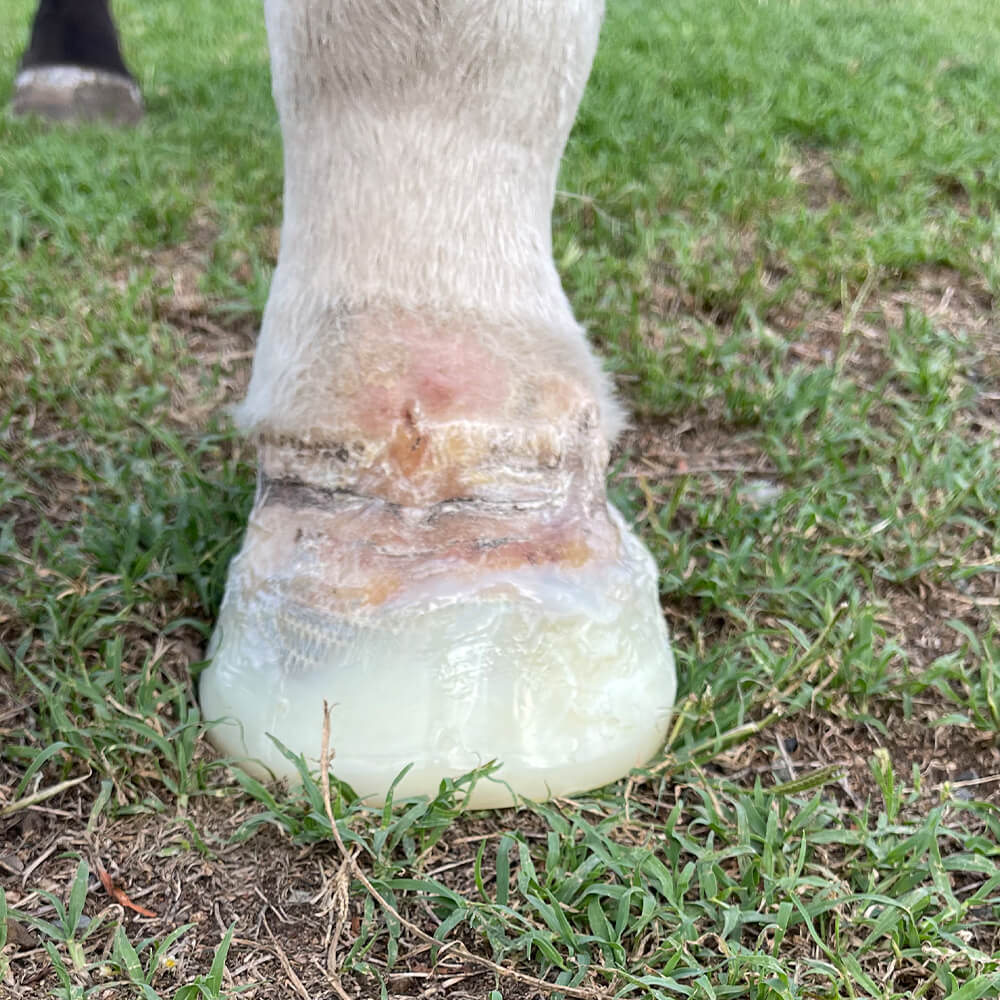
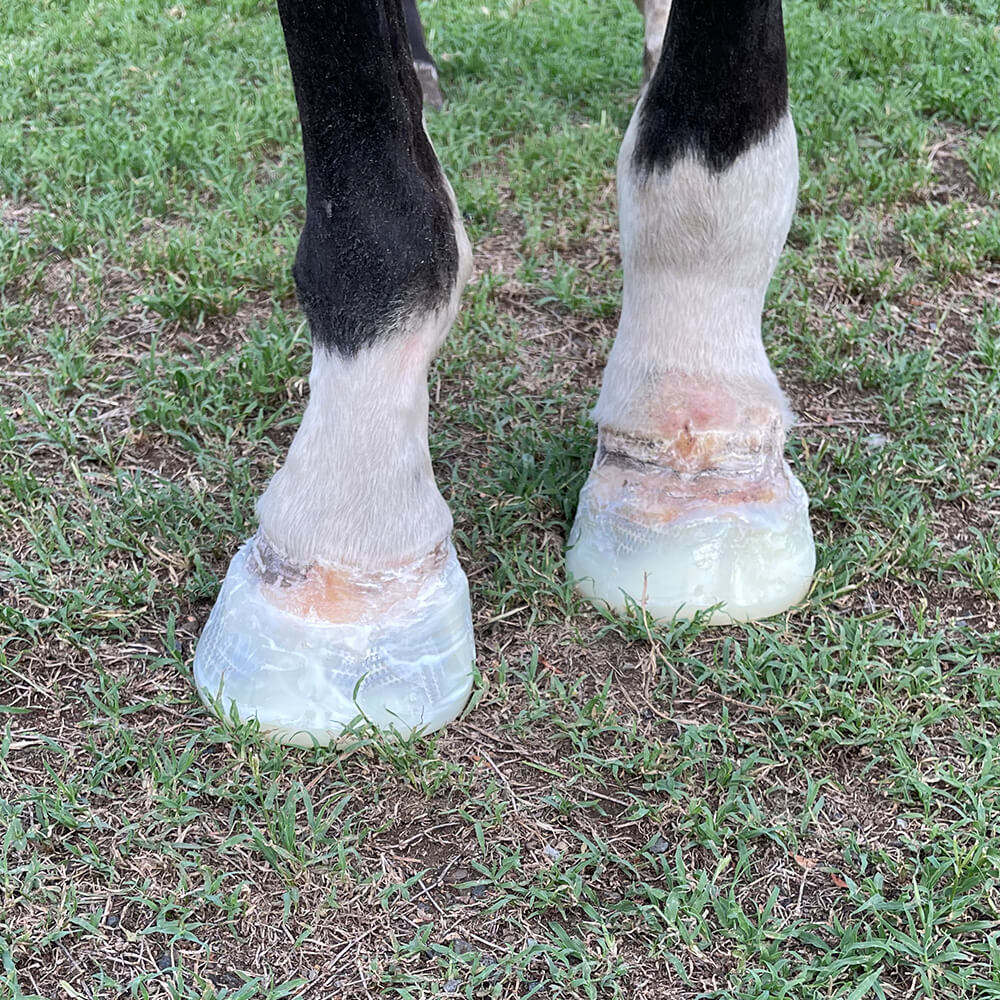
Given the depth of the abscess and extent of the under run sole, due to the laminitis, she has a long way to go. But she has started to move around the paddock rather than lying down most of the a day. Her FormaHoof application has helped control the hoof growth in a downward direction, stopping the toe distortion that is commonly seen in chronic laminitis cases.
It has also kept the animalintex and medication in place, so it remains clean throughout the application cycle. I expect to see better sole depth and improved healing in her feet on the next application.



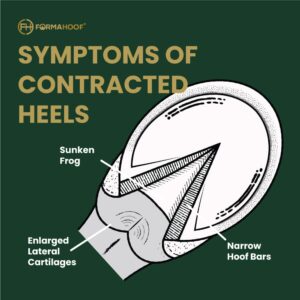
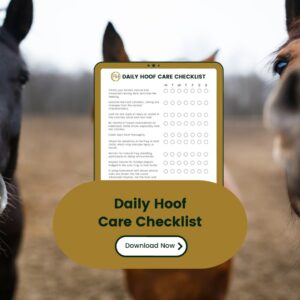



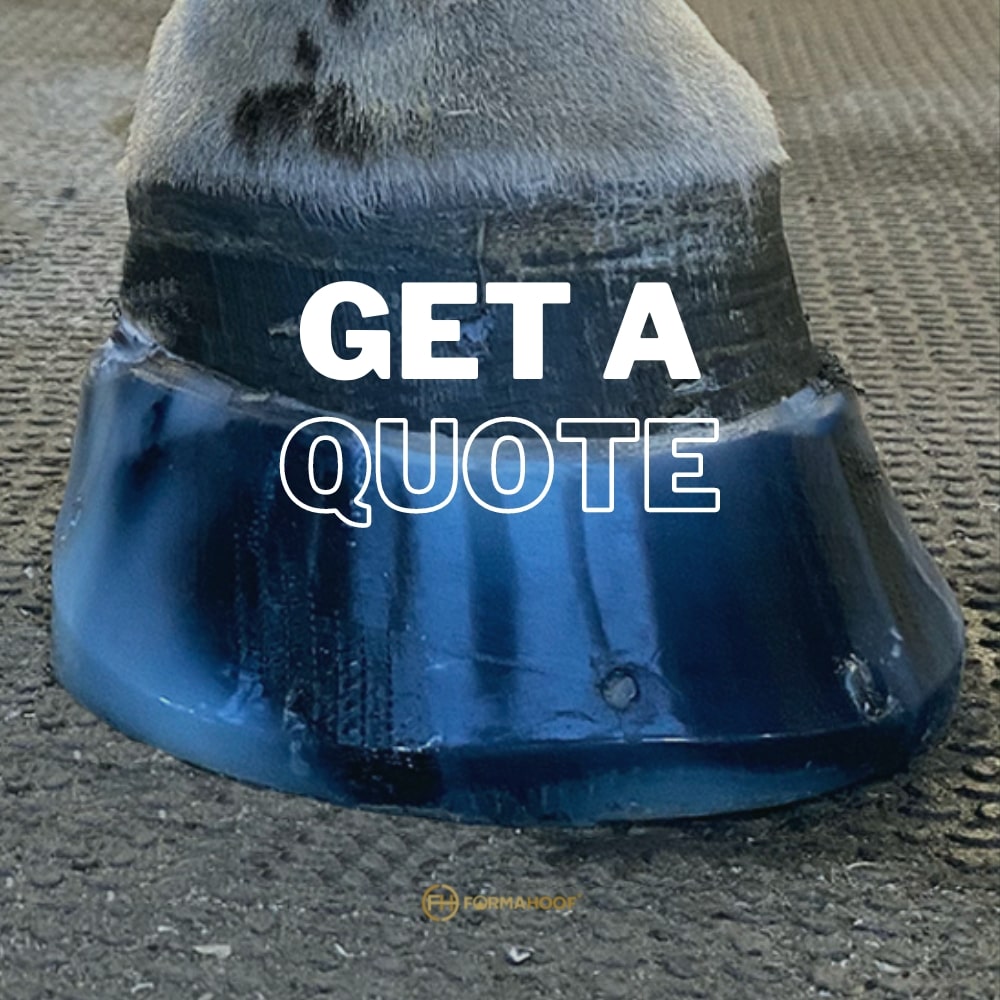
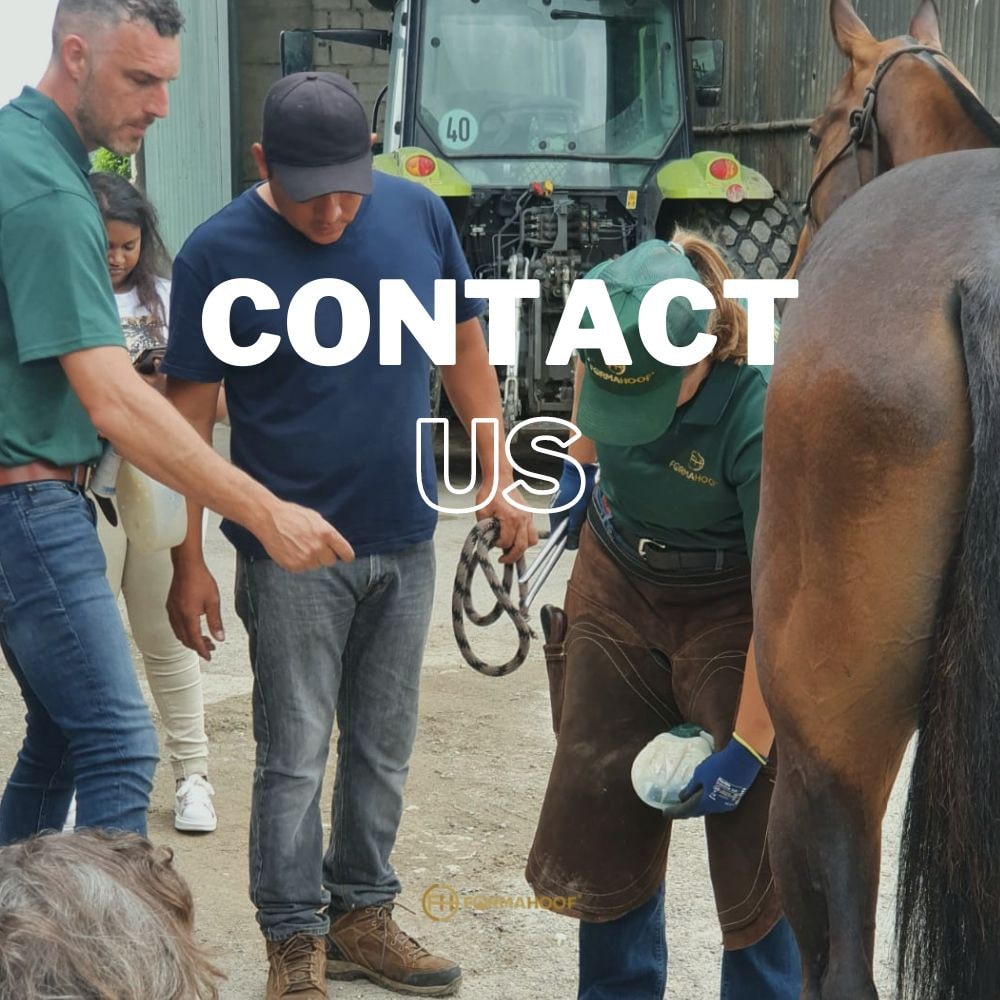
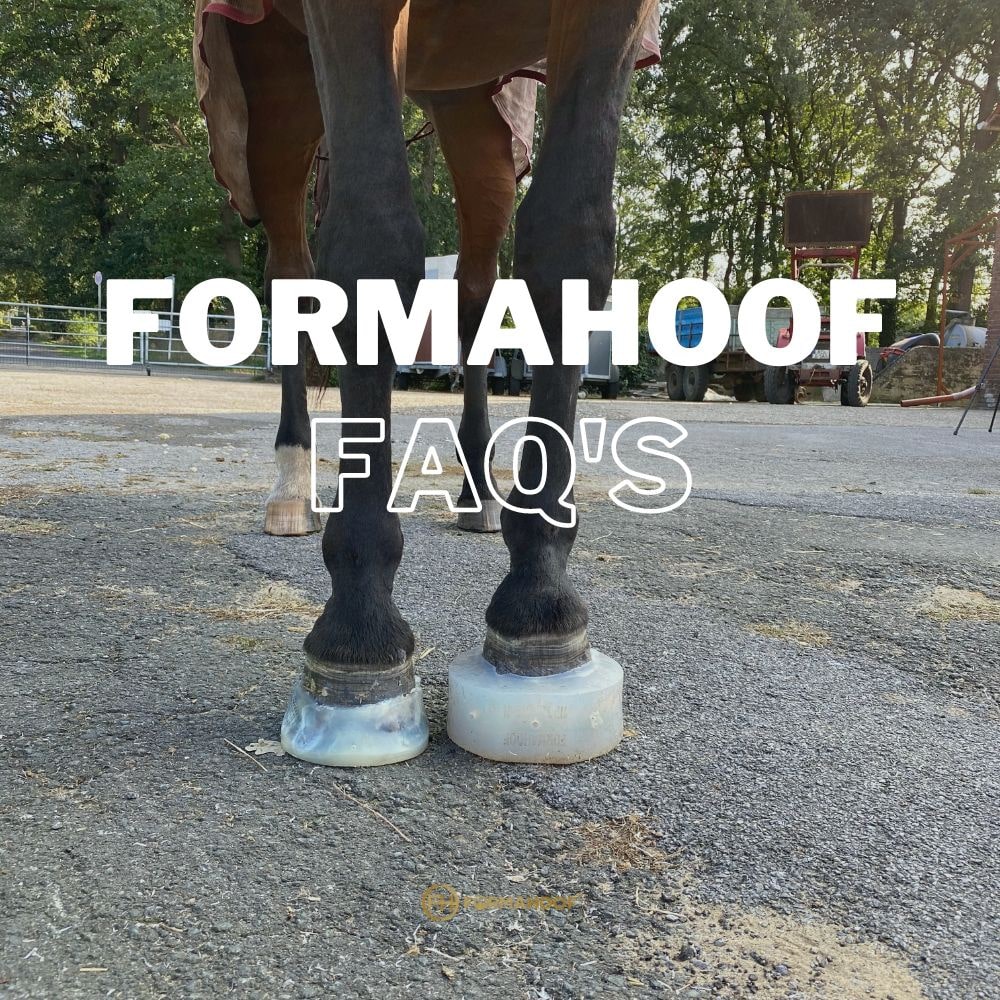




2 Responses
In the light of what I’ve read here
I can not believe that Black Caviar has been euthanased.
Why would they do that to such a special horse?
Thank you for sharing your thoughts and feelings about the heartbreaking loss of Black Caviar. It’s incredibly difficult to accept the passing of such a special and beloved horse, especially one that has given so much to the world of racing and captured the hearts of so many.
Laminitis is a devastating condition, and it’s clear that Black Caviar received the best possible care from her team. Despite all efforts, sometimes, the severity of the condition leaves few options, and we empathise when the decision to euthanize is made with the horse’s welfare as the top priority.
At FormaHoof, we’ve seen how laminitis can take a toll on horses, and we’ve been fortunate to have helped many horses recover and return to a comfortable life, even broodmares who have gone back into foal. However, as you mentioned, not everyone is aware of all the treatment options available, and that’s why spreading awareness is so important.
While we can’t change what happened with Black Caviar, we can help others who might be facing similar challenges by sharing knowledge and ensuring they know there are options out there, like FormaHoof, that could potentially make a difference.
If you ever come across anyone dealing with laminitis in their horses, please don’t hesitate to mention us. Together, we can work to ensure that more horses have access to the treatments that could save or improve their lives.
Again, thank you for your heartfelt comment, and let’s keep the memory of Black Caviar alive by continuing to care for and support all horses facing this difficult condition.